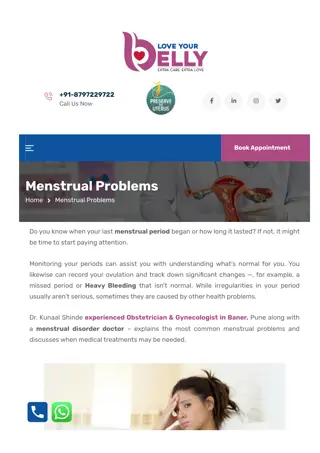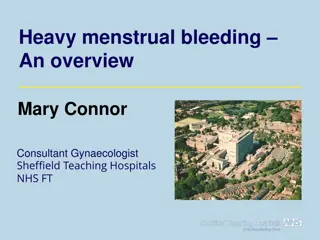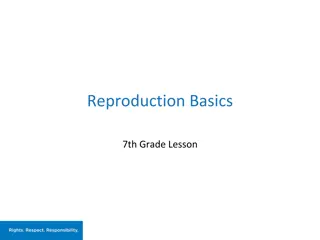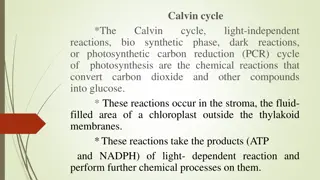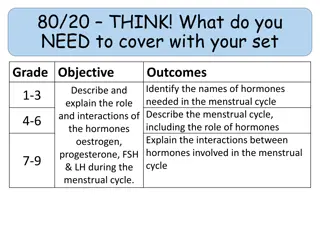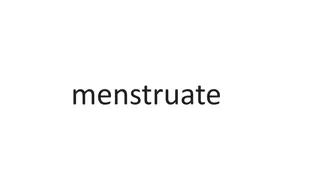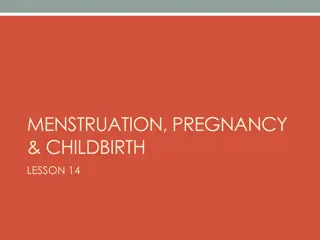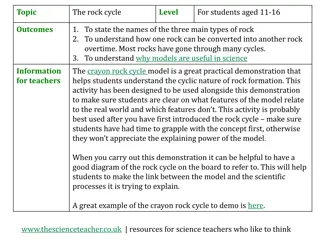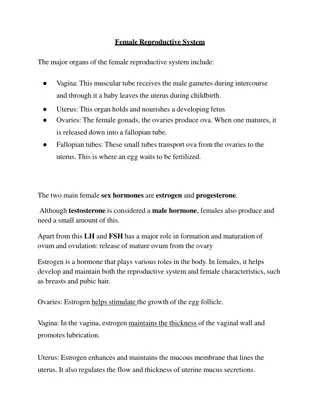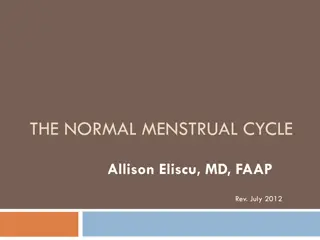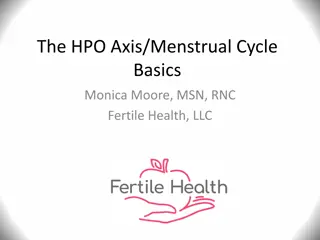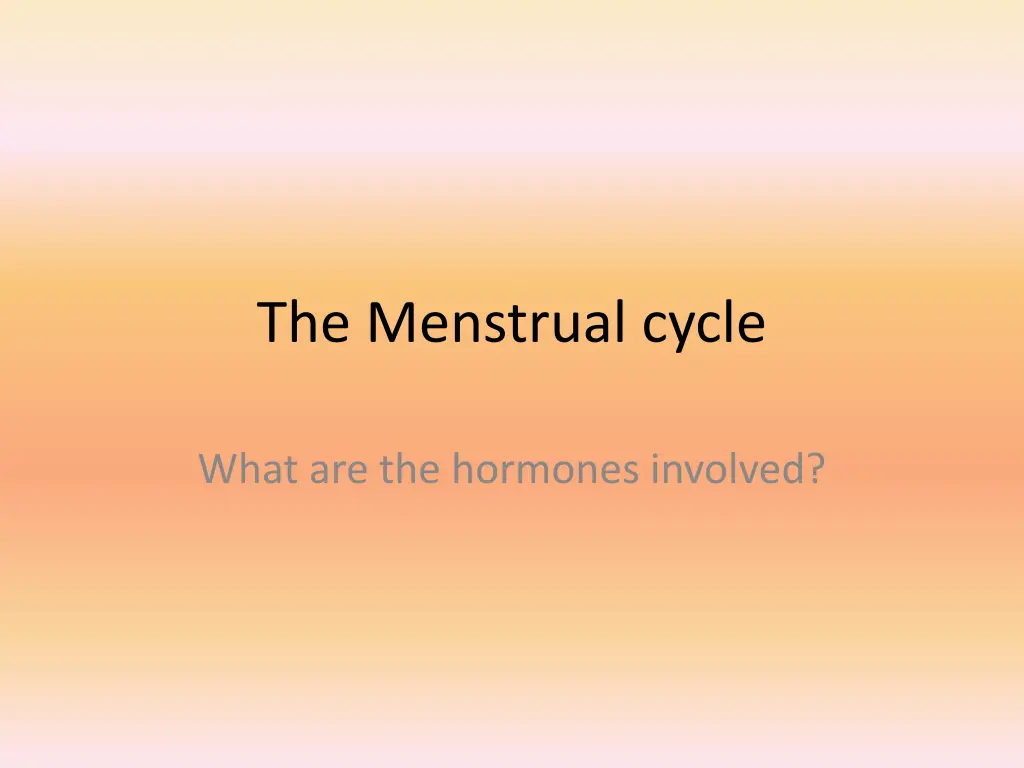
Understanding Female Reproductive Hormones and Menstrual Cycle
Explore the hormones involved in reproductive processes, the main stages of the menstrual cycle, and how these hormones interact to regulate the cycle. Discover the functions of key female reproductive organs like the ovaries, uterus, and cervix. Label and learn about the female reproductive system while understanding the roles of hormones like FSH, LH, estrogen, and progesterone in the cycle.
Download Presentation

Please find below an Image/Link to download the presentation.
The content on the website is provided AS IS for your information and personal use only. It may not be sold, licensed, or shared on other websites without obtaining consent from the author. If you encounter any issues during the download, it is possible that the publisher has removed the file from their server.
You are allowed to download the files provided on this website for personal or commercial use, subject to the condition that they are used lawfully. All files are the property of their respective owners.
The content on the website is provided AS IS for your information and personal use only. It may not be sold, licensed, or shared on other websites without obtaining consent from the author.
E N D
Presentation Transcript
The Menstrual cycle What are the hormones involved?
Learning objective State the hormones involved in reproduction Describe the main stages of the menstrual cycle Explain how hormones interact to control the menstrual cycle
Functions of the female parts Ovary the place where the eggs (ova) are stored and matured, also produces female hormones oestrogen and progesterone Oviduct (fallopian tube) the tube that the egg (ovum) rolls down to get to the uterus and where fertilisation takes place Uterus fist sized muscular organ where the fertilised egg (zygote) embeds itself and develops into a foetus Cervix - the neck, or opening of the uterus. Usually this is plugged with a thick mucus to prevent unwanted sperm, except at fertile times of the month Vagina the tube leading up to the cervix that allows for sperm to be delivered but reduces the chances of infection
The Menstrual Cycle Label your worksheet as we go through 6
The hormones involved Name of hormone Gland secret ed by Role of hormone Stimulates/ inhibits Follicle stimulating hormone (FSH) Pituitary (brain) Travels to the ovary causing egg to mature Stimulates oestrogen production Oestrogen Ovary Travels to the uterus to thicken the endometrium (lining) Inhibits FSH & stimulates LH Luteinising hormone (LH) Pituitary Travels to the ovary to promote ovulation Stimulates progesterone Progesterone Ovary Travels to the uterus to maintain thick lining throughout a pregnancy Inhibits LH
The pituitary gland releases FSH to stimulate egg development and production of oestrogen in the ovaries 9
Oestrogen builds and repairs the endometrium, the lining of the uterus The endometrium is a thick blood layer that provides nutrition and oxygen for a zygote to embed and develop 10
Ovulation Oestrogen also stimulates LH production in the pituitary gland LH finishes the job of maturing the ovum in the ovary and this leads to ovulation, release of the egg, at around day 14 of the cycle. This is when fertilisation will happen, in the oviduct (fallopian tube) http://www.youtube.com/watch?v=nLmg4wSHdxQ 11
Negative feedback mechanisms A feedback mechanism is like a flow chart One process will lead to the activation of a second process, which may then go on and stimulate further processes An example of a feedback mechanism is when a teenager puts dirty feet on the coffee table - > this will lead to a parent getting cross and shouting at them to get their feet down -> the teenager will respond with a flounce -> the parent digs up some issue from a week ago . 13
Negative feedback in the menstrual cycle Pituitary gland stimulates FSH production FSH influx stimulates oestrogen from the ovaries Oestrogen in the blood shuts off FSH production but stimulates LH from the pituitary LH influx shuts off oestrogen production but stimulates progesterone from the ovaries to maintain the endometrium 14
Ovulation Take a look at the animation of ovulation to find out more http://www.youtube.com/watch?v=nLmg4wS HdxQ
Try the cut and stick activity Then try the wordsearch

